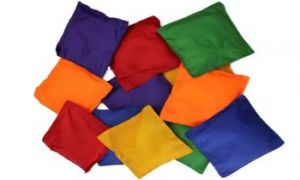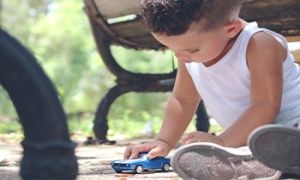The following article lists 20 Cultural Games, Instructions For Each Game, Benefits Of Teaching Children These Games, Linking To The EYLF and more.
20 Cultural Games
- Seven Stones (India): A traditional game where players stack stones and try to knock them over with a ball while avoiding being tagged.
-
Sheep and Tiger (Nepal): A strategy game where one player is the tiger and others are sheep, working together to trap the tiger.
-
Bambaram (India): A spinning top game that encourages coordination and creativity.
-
Pass the Parcel (United Kingdom): A fun game where a wrapped parcel is passed around while music plays, and layers are unwrapped when the music stops.
-
Jianzi (China): Similar to hacky sack, players keep a weighted shuttlecock off the ground using their feet.
-
Tuho (Korea): A game where players throw sticks into a narrow-necked jar.
-
El Gato y El Ratón (Mexico): A game of tag where one child is the cat and another is the mouse, with others forming a circle to protect the mouse.
-
Duck Duck Goose (United States): A classic circle game where one child tags another to chase them around the circle.
-
Kubb (Sweden): A lawn game where players knock over wooden blocks by throwing batons.
-
Pilolo (Ghana): A treasure hunt game where children search for hidden objects.
-
Ampe (Ghana): A clapping and jumping game that requires quick reflexes.
-
Catch the Dragon’s Tail (China): A line of children tries to protect the "tail" while the "head" attempts to catch it.
-
Otedama (Japan): A traditional juggling game using small beanbags.
-
Nalukataq (Arctic): A blanket toss game played during celebrations.
-
Lotería (Mexico): A bingo-like game using pictures instead of numbers.
-
Hopscotch (Global): A hopping game drawn on the ground with chalk.
-
Mbube Mbube (South Africa): A game where children guide a "lion" to catch an "antelope" using chants.
-
Statues (Greece): A game where players freeze in place when the leader turns around.
-
Ring-a-Ring o’ Roses (United Kingdom): A circle game with singing and actions.
-
Tinikling (Philippines): A rhythmic game where children jump between moving bamboo poles.
Instructions For Each Game
-
Seven Stones (India):
-
Stack seven stones in a pile.
-
One team throws a ball to knock over the stones, while the opposing team tries to tag them as they rebuild the stack.
-
-
Sheep and Tiger (Nepal):
-
One child is the "tiger," and the rest are "sheep."
-
The sheep work together to block the tiger’s movements while the tiger tries to "catch" a sheep.
-
-
Bambaram (India):
-
Spin tops on a flat surface.
-
Players try to hit others’ tops out of a circle or keep theirs spinning the longest.
-
-
Pass the Parcel (United Kingdom):
-
Wrap a gift in multiple layers of paper.
-
Pass the parcel around while music plays. When the music stops, a layer is unwrapped, and the game continues.
-
-
Jianzi (China):
-
Use your feet to keep a shuttlecock-like object in the air.
-
The goal is to pass it between players without letting it touch the ground.
-
-
Tuho (Korea):
-
Place a narrow jar at a distance.
-
Take turns throwing sticks into the jar; the person with the most sticks in wins.
-
-
El Gato y El Ratón (Mexico):
-
Form a circle. One child is the cat, and another is the mouse.
-
The cat tries to catch the mouse, while the circle helps the mouse escape.
-
-
Duck Duck Goose (United States):
-
Sit in a circle. One child walks around, tapping others’ heads, saying "duck" until they choose "goose."
-
The "goose" chases the first child. If tagged, the first child is "it" again.
-
-
Kubb (Sweden):
-
Set up wooden blocks (kubbs) on a lawn.
-
Players throw batons to knock over opposing kubbs before knocking over the central "king" block.
-
-
Pilolo (Ghana):
-
Hide small objects while children close their eyes.
-
They search for them once the game begins. Whoever finds the most wins.
-
-
Ampe (Ghana):
-
Two players jump while clapping their hands.
-
They guess which way the other’s foot will land. Correct guesses earn points.
-
-
Catch the Dragon’s Tail (China):
-
Children form a line holding onto each other’s waists.
-
The first child tries to "catch" the last child while the line twists and moves to protect the "tail."
-
-
Otedama (Japan):
-
Toss and catch small beanbags while completing tasks, like clapping or flipping a bag.
-
-
Nalukataq (Arctic):
-
Use a large blanket to toss one child in the air. Others hold the edges tightly to keep it safe.
-
-
Lotería (Mexico):
-
Like bingo, players match pictures on cards to those called out. The first to complete a row wins.
-
-
Hopscotch (Global):
-
Draw numbered squares on the ground.
-
Toss a small object onto a square, then hop through the grid, skipping the square with the object.
-
-
Mbube Mbube (South Africa):
-
One child is the "lion," and another is the "antelope."
-
Players guide the lion to the antelope by chanting “Mbube Mbube,” louder as they get closer.
-
-
Statues (Greece):
-
A "leader" faces away while others move forward.
-
When the leader turns, everyone freezes. If someone moves, they go back to the start.
-
-
Ring-a-Ring o’ Roses (United Kingdom)
-
Children hold hands in a circle, sing the rhyme, and fall to the ground at the end.
-
-
Tinikling (Philippines):
-
Use bamboo poles, moving them rhythmically.
-
Children jump in and out of the poles, matching the beat.
-
Benefits Of Teaching Children These Games
Linking To The EYLF
Avoiding Cultural Tokenism
Creating A Multicultural Environment In An Early Childhood Setting
Examples Of How Diverse Cultures Can Be Incorporated In Everyday Practice
Cultural Competence In Early Childhood Settings
Celebrating Multiculturalism In Childcare







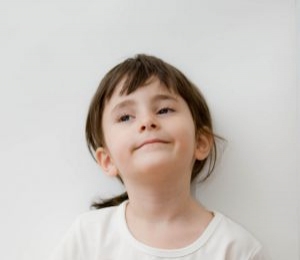 Open ended questions cannot be responded to with one word answers such as yes or no. These types of questions enables a child to provide
Open ended questions cannot be responded to with one word answers such as yes or no. These types of questions enables a child to provide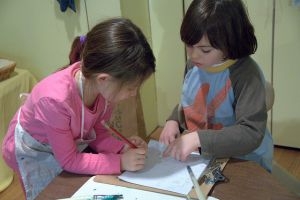 During your child’s preschool years, an important milestone begins to emerge. This is the development of pre-writing skills. Pre-writing skills are used to encourage, develop
During your child’s preschool years, an important milestone begins to emerge. This is the development of pre-writing skills. Pre-writing skills are used to encourage, develop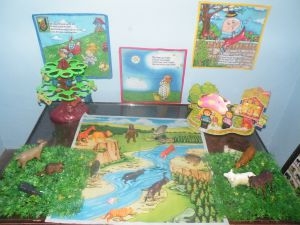 Open ended materials enables children to play freely. They are objects that have no rules to follow, use or function. Raw materials that can be
Open ended materials enables children to play freely. They are objects that have no rules to follow, use or function. Raw materials that can be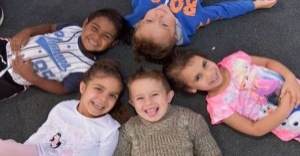 An Acknowledgment of the Country is a way of showing respect for the Traditional Owners and can be given by both non-Indigenous people and Aboriginal
An Acknowledgment of the Country is a way of showing respect for the Traditional Owners and can be given by both non-Indigenous people and Aboriginal Language plays an important role in a child’s development. It enables a child to communicate effectively with their family, learn at school, socialize with friends,
Language plays an important role in a child’s development. It enables a child to communicate effectively with their family, learn at school, socialize with friends,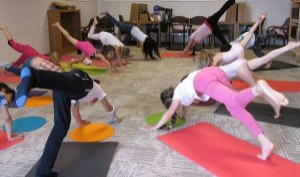 Like adults, children have to deal with their own stress in life. Moving house, starting a new school, preparing for a new sibling - these are
Like adults, children have to deal with their own stress in life. Moving house, starting a new school, preparing for a new sibling - these are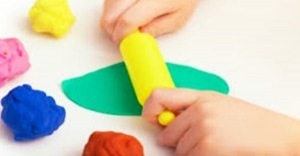 Playdough is such a versatile material. It provides numerous benefits to children as they manipulate it, it is safe and soothing and provides children with
Playdough is such a versatile material. It provides numerous benefits to children as they manipulate it, it is safe and soothing and provides children with Teaching children about sustainability enables them to appreciate and respect the natural environment. Early childhood services can provide meaningful hand on learning experiences in order
Teaching children about sustainability enables them to appreciate and respect the natural environment. Early childhood services can provide meaningful hand on learning experiences in order Recycling is an important concept that teaches children to care for the environment. It encourages children to be responsible and show a growing appreciating for
Recycling is an important concept that teaches children to care for the environment. It encourages children to be responsible and show a growing appreciating for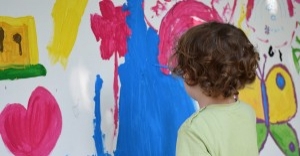 When children apply paint to paper, glue things together, or pound a lump of clay, they experiment with colour, shape design and texture.
When children apply paint to paper, glue things together, or pound a lump of clay, they experiment with colour, shape design and texture.

